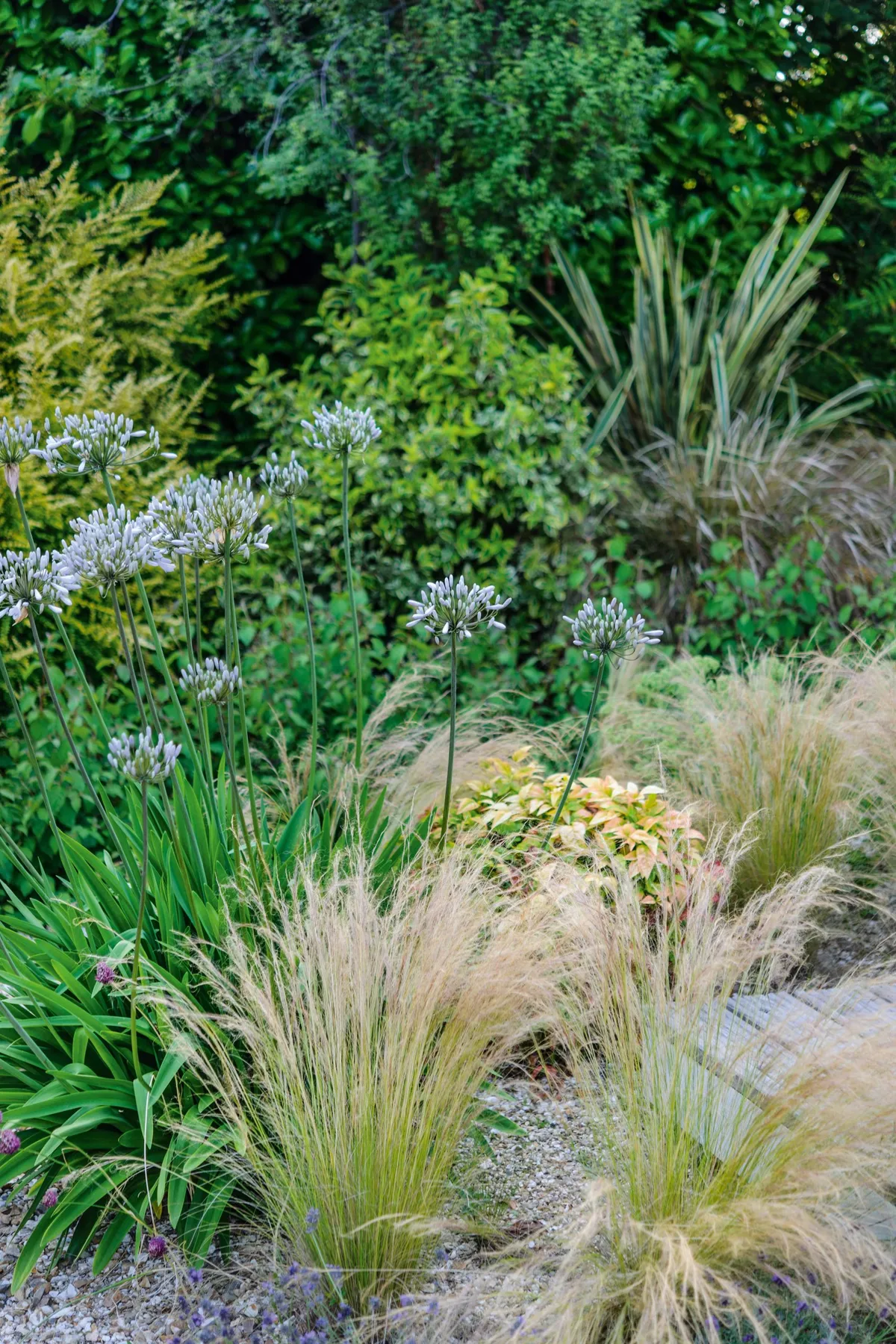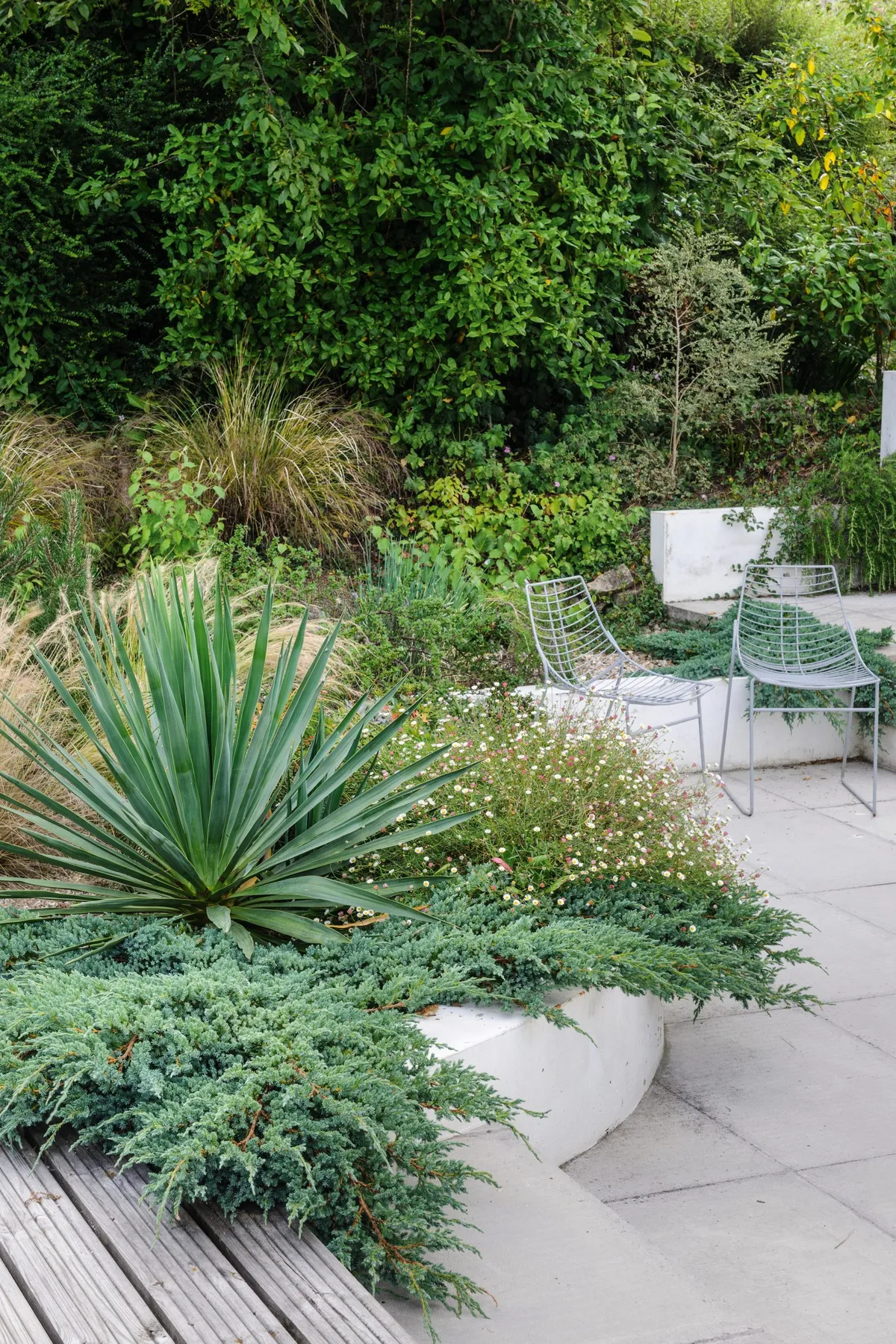The romantic Dorset hills are still gently rolling as you drop to the village of Uplyme, a picturesque pause before a final mile-long descent to the sandy bay and coastal town of Lyme Regis. Here above the main town the Lym River runs through a sheltered wooded valley and a jigsaw of houses line the slopes. Hidden among them, the Garden House is an interesting example of sleek and functional mid-century modern architecture. Designed in 1964 by architect Howard Mitchell, this home feels secluded and relaxed despite the presence of a cluster of immediate neighbours. The single-storey house sits within the former apple orchard of an adjacent property, and a few surviving apple trees still hug the swan-neck drive that curves through open lawns to deliver visitors at the steps of the house. Mature acer trees, evergreen hedges and wandering thickets of bamboo create privacy, gently pushed to the margins allowing a big seaside sky to bathe the sloping south-facing site in light.
The owners Vanessa Barlow and Jethro Marshall moved here from London 11 years ago, wanting to bring some urban style to their new rural relocation. Appreciating the classic clean lines and natural materials of the many original interior features, the couple were in no hurry to make radical changes to the house, but they did want to extend it to accommodate their family, in a way that would enhance the existing architecture and sit alongside a garden that would complement the clean lines of their house. The couple already knew Lyme Regis-based garden designer Alice Meacham and to coincide with the second phase of their extension work asked her to come up with an initial concept plan that would associate the new extension to its surrounding space, and excavate out the sloping bank to the west of the house to create an outdoor living and dining area.
Alice’s clients favoured simplicity and required year-round interest. They admired broad Oudolfian sweeps of ornamental grasses, but also the informality and understated all-season interest inherent in Beth Chatto’s dry, gravel garden. Alice proposed an informal gravel garden that runs like a dry riverbed around the terrace, but while the dry, breezy growing conditions of Beth Chatto’s East Anglian garden benefit drought-tolerant Mediterranean plants, Alice was aware of the challenges posed by the retentive soil and high rainfall of this west Dorset location. Improved drainage was of paramount importance. Extensive land drains were installed and tonnes of gravel were mixed with imported topsoil and oak sleepers used to create raised beds at the front of the house, a solution that works well with the slope. See the gravel garden Alice created and some of the plants used below.
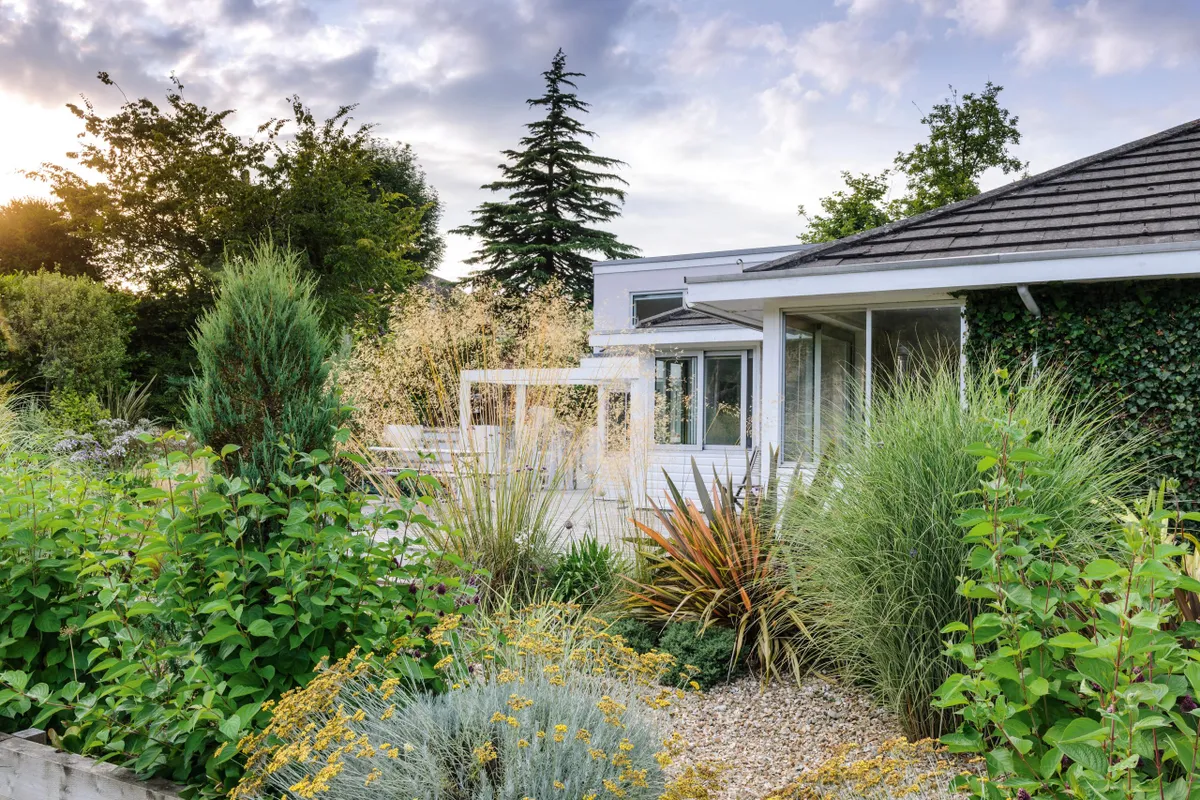
From high summer, the golden seedheads of Stipa gigantea create a translucent veil, softening the house’s strong lines, and connecting the vibrant bronze of bold phormiums and ochre flowers of Helichrysum italicum.
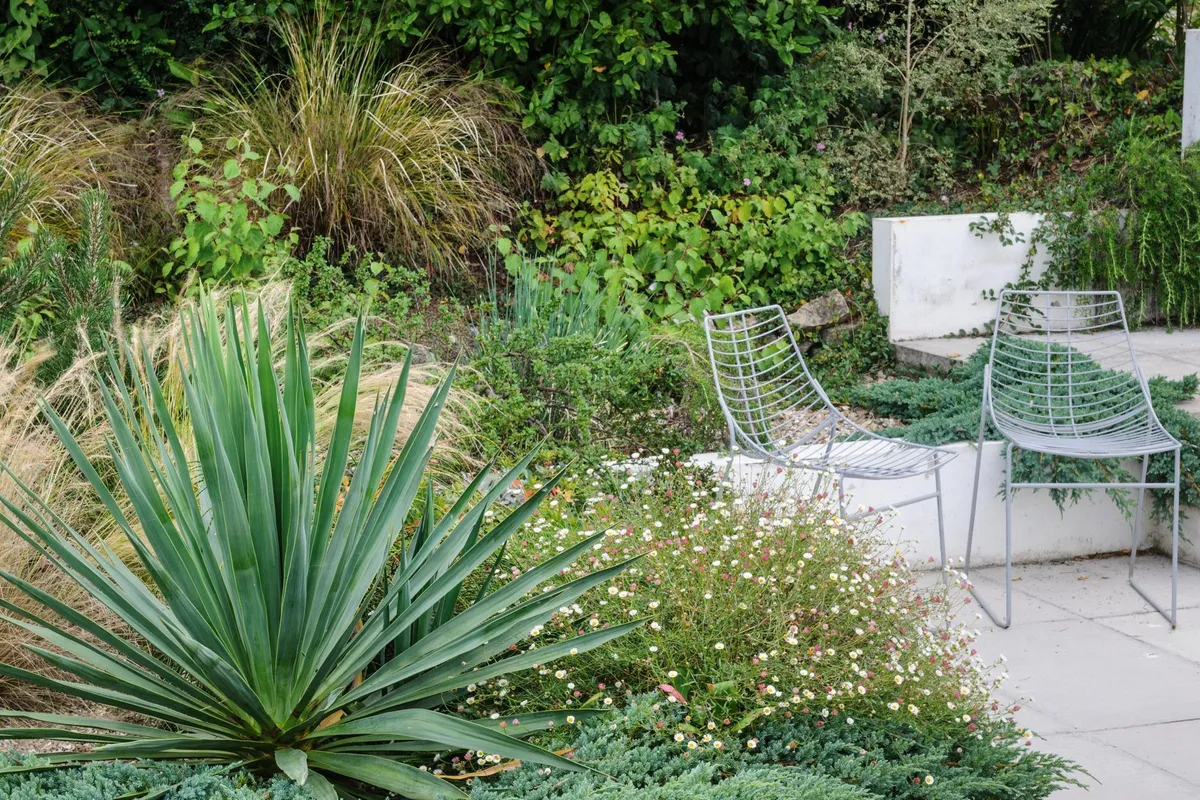
The planting in the borders adjacent to the terrace provides textural contrast and year-round interest. The low-sprawling limbs of Juniperus squamata ‘Blue Carpet’ are juxtaposed with the scampering mounds of Erigeron karvinskianus.
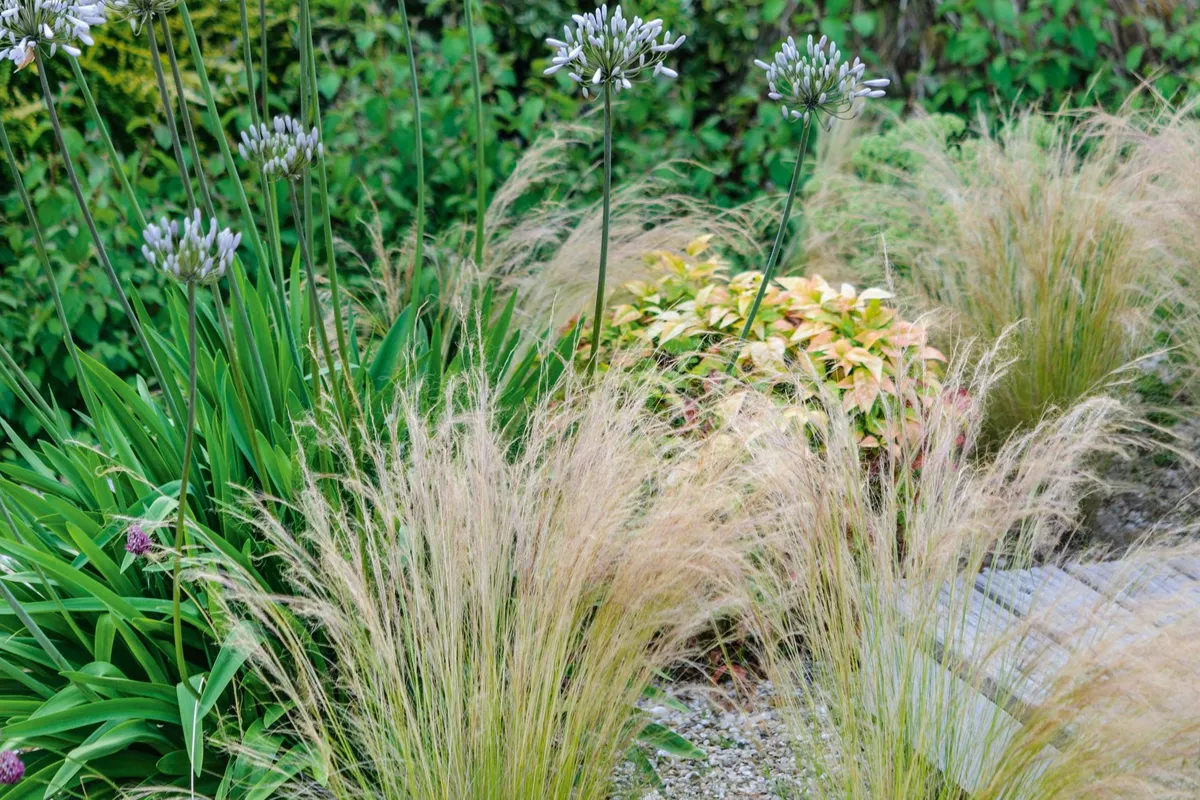
Splashes of colour provide seasonal highlights among the airy gravel planting. Drifts of architectural perennials, such as the blue African lily Agapanthus ‘Windsor Grey’, stand out against the soft buff tones of the feathery grass Stipa tenuissima.
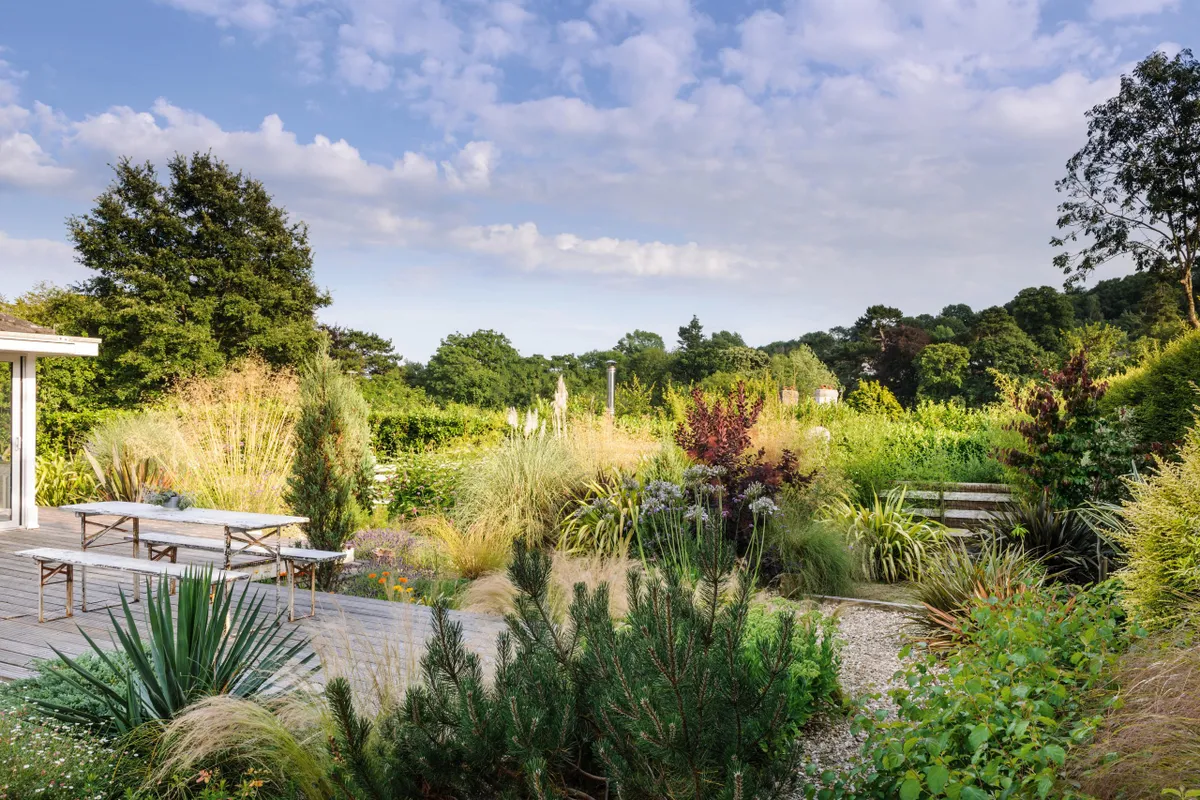
Shapely conifers, such as the columnar Juniperus scopulorum ‘Skyrocket’ and moundy Pinus mugo, furnish the garden with a sense of rhythm adding depth to the composition. The glowing foliage of Cotinus ‘Flame’ is a bold addition.
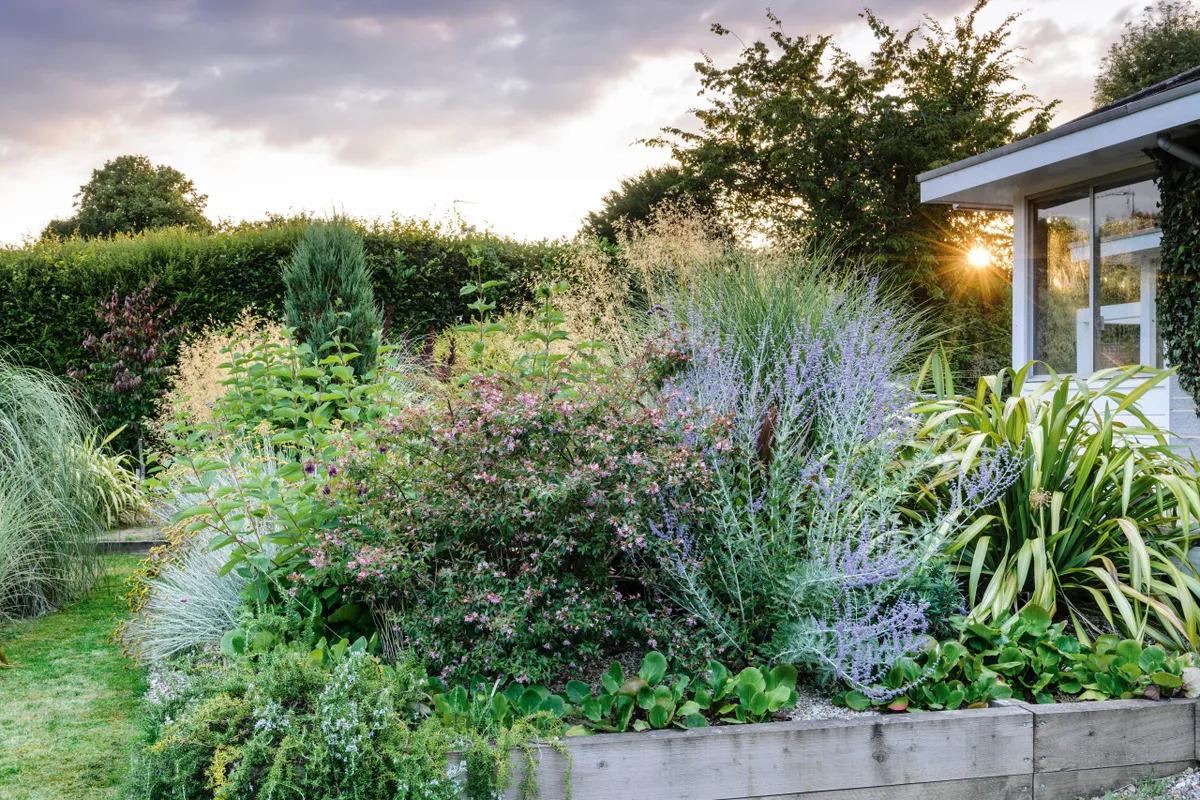
At the feet of a semi-evergreen Abelia ‘Edward Goucher’, oak landscape sleepers are abutted by a lower tier of planting. Rhizomatous Bergenia ‘Autumn Magic’ reflowers sporadically after its first flush, its leathery leaves bringing a blaze of autumn colour.
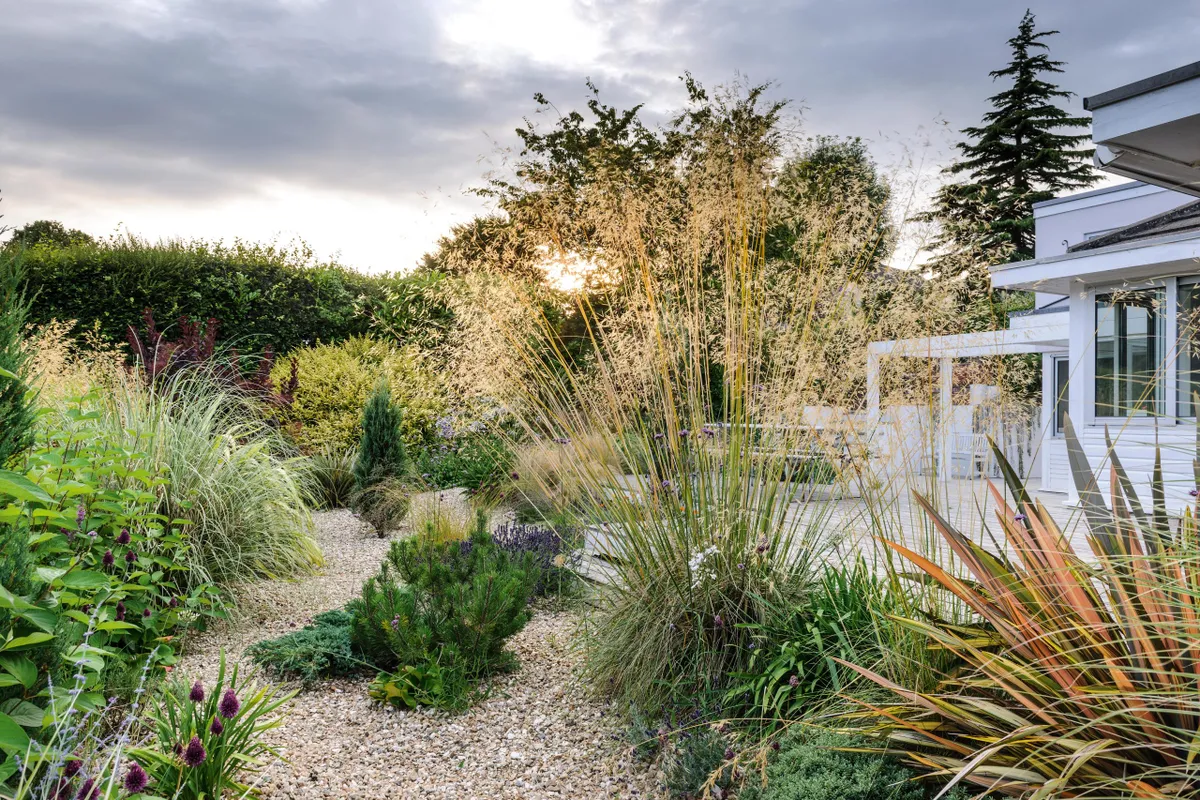
Surrounding the terrace is a gravel-filled central depression, or dry river bed, which also acts as the principal walkway through the gravel garden creating an atmospheric and serene meander past airy, metallic grasses and tactile conifers.
How to use conifers in a contemporary garden
Conifers are making a quiet comeback. Having shaken off their unfashionable associations they are enjoying an overdue renaissance. Unsurprising as they are largely hardy, disease and pest free and grow in a diverse range of habitats. Often evergreen, they are architectural plants with a broad colour spectrum of foliage. At the Garden House they fit neatly with the mid-century aesthetic and provide valuable evergreen interest and structure throughout the year. Alice positioned dwarf cultivars through the garden, giving each its own space, while also creating textural contrast by close associations with soft fluid grasses such as Stipa tenuissima and stiff strappy colourful phormiums. “In Vanessa’s garden I have used Juniperus squamata ‘Blue Carpet’ to hang over the curved, white wall and soften where the step and decking meet, Thuja plicata ‘Whipcord’ next to the yucca to provide a complete contrast of leaf shape, and Pinus mugo sprouting out of the flinty gravel – as a nod to the dry, rocky slopes of more arid regions,” explains Alice. Conifers bring balance and depth to the composition, providing sculptural, evergreen volume and groundcover in contrast to the seasonality of the shimmering voluminous summer grasses.
